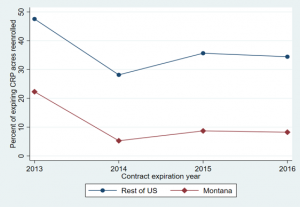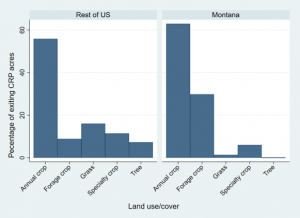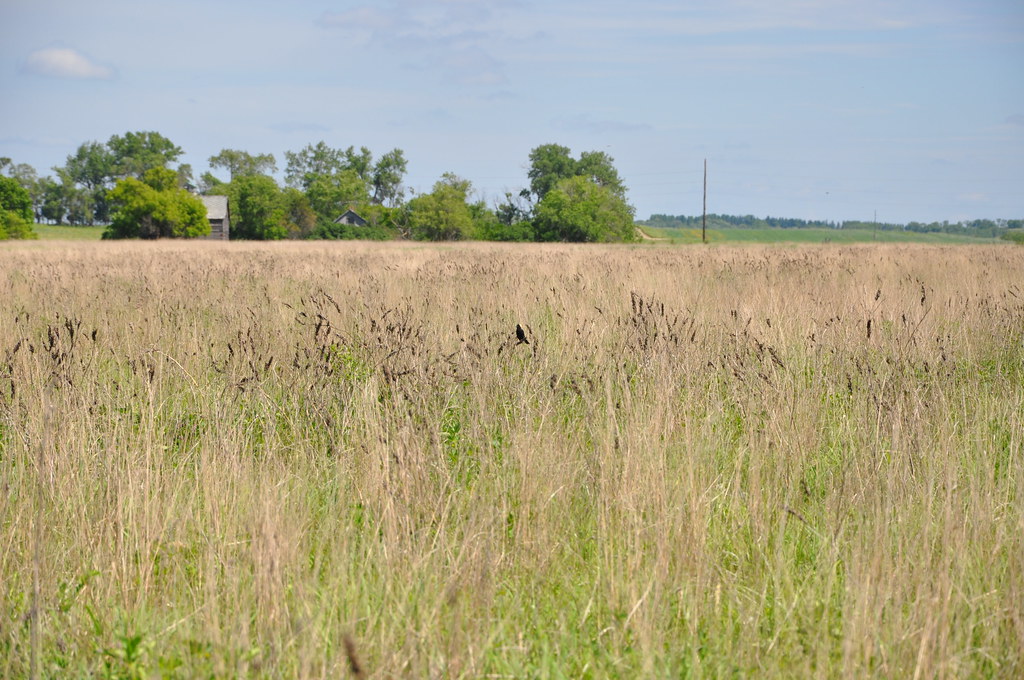This past winter, USDA’s Farm Service Agency held the first general signup for the Conservation Reserve Program (CRP) since 2016. New provisions in the farm bill cap CRP rental payments at lower levels than in years past. The rental payment caps are even more stringent, however, if a landowner wishes to reenroll land in an expiring CRP contract. This latter provision is closely linked to the “fate” of expiring CRP land, a topic my coauthors and I studied in a report released earlier this year by the USDA’s Economic Research Service. The fate of land in expiring CRP contracts is a multifaceted issue that can be broken down into two broad research questions. First, when contracts expire, how much of the expiring land is reenrolled in the program? Second, if the land is not reenrolled, does it immediately return to crop production or does the conservation cover associated with CRP enrollment persist beyond the life of the contract? In this post, I will compare some of the national patterns shown in the report with similar figures specific to expiring CRP land in Montana.
Our analysis was based on a non-public USDA dataset covering all CRP contracts, from both continuous and general signups, expiring over 2013-2016. At roughly 743,000 acres, Montana had the most expiring CRP land during this time period. In terms of the percentage of expiring land that was reenrolled, however, Montana fell well below the national average (Fig. 1). Montana’s reenrollment rate peaked at 22% (in acreage terms) for contracts expiring in 2013, compared to a much higher rate of 48% for the rest of the US. After 2013, the rate of reenrollment remained under 9% for Montana, while it stayed above 28% for land expiring throughout the rest of the country.

A primary reason why Montana’s reenrollment rate skewed so low compared to the national average is the fact that nearly all CRP land in Montana comes from the general signup. As we show in the report, land enrolled through the general signup was less likely to be reenrolled over our study period, partly due to a lack of available reenrollment opportunities compared to previous years. In addition, CRP land in Montana is predominantly enrolled for practices related to grass cover and wildlife habitat. These two practice categories, grass and wildlife, had lower rates of reenrollment compared to other practice types, specifically those involving tree cover and wetlands provision.
The second part of the report considered what happened to expiring CRP land if it was not reenrolled and exited the program. In Montana, the overwhelming majority of land exiting the CRP immediately went back into some type of productive agricultural use, which most often was annual (63%) or perennial forage (30%) crop production (Fig. 2). Throughout the broader US, a larger fraction of land remained in either grass or tree cover – 23% compared to 1% in Montana – after exiting the CRP.

For Montana, this implies that there is a relatively high degree of what economists refer to as “additionality” regarding the CRP rental payments paid to reenrolling landowners. In this context, if CRP conservation outcomes are additional, it means that they would not have been achieved were it not for the rental payment incentives provided by the program. Since virtually all of Montana’s land exiting the CRP returned back to crop production in a fairly short time window (1-4 years), it implies that the contract payments were needed to secure the conservation benefits the USDA sought to obtain. It should be noted, however, that the analysis presented here (and in the report) is descriptive, and a more complex statistical methodology would be needed to draw a definitive conclusion about the additionality of the CRP rents paid to reenrolling landowners.

